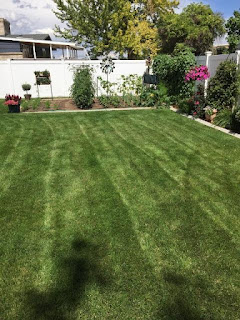September’s cooler days and warm soil temperatures are a perfect combination for planting in the fall. The weather isn't quite as tricky as it is in the spring, and you don't have that "spring rush" feeling to get everything done after winter. In addition, there’s a great selection of perennials and shrubs to choose from, including mums and asters, colorful sedums and blanket flowers, as well as ornamental grasses. Edibles such as raspberries, grapes, blackberries and rhubarb can be planted now, as well as Butterfly Bush, Potentilla, Spirea and other flowering shrubs.
The key to fall planting, just like every other time of the season, is to prepare the soil. The advantage this time of year is the soil is warm and drier, making it easier to add amendments. In our typical clay soils, that means adding organic material to the planting site is key.
We stock locally produced bagged soil amendments such as Sheep, Peat and Compost. Bagged amendments make it easy to take home and place in the garden. Rich in trace minerals, organic material and beneficial microbes, Earth Essentials Sheep, Peat and Compost improves the soil’s physical and biological health, essential for initial planting as well as sustained growth. Amendments should be incorporated into the planting site at a 50:50 ratio with the existing soil.
Plan to dig the planting hole twice as wide as the root ball and once again as deep. Once the planting hole is dug, fill it with water and observe how long it takes to drain. If it takes more than five minutes, add more organic material.
Remove the plant from its container and break up the root ball, center it in the hole and back fill with amended soil, using enough to create a shallow basin to facilitate watering. As you’re filling the planting hole, apply ferti•lome liquid Root Stimulator to reduce transplant shock and stimulate strong root development.
Keep plants evenly moist. This is best done by checking each plant daily and hand watering as necessary. Water slowly. Fill the moat you built around each plant and let the water slowly seep in. Don’t rely on automatic irrigation.
Plant in the evening. This will give the new plant some 8 to 10 hours to begin acclimating without the stress of direct sun and higher temperatures.
When the ground gets cold, usually around Thanksgiving, add a 2" to 3" layer of mulch. This will hold in the moisture, keep the ground cold and stable through the winter helping the plant maintain dormancy and less likely to trigger new growth during any brief warm up periods. Soil Pep is a good choice for winter mulch. Plan to water all the plants in your landscape every 4-5 weeks during the winter.
In summary, planting in the fall gives perennials, trees and shrubs time to establish and develop strong root systems, thus giving them vigorous head start next spring
























